The Cabalah, Philosophy and Buddhism – A plaited challah bread
The Duffield interpretation of ‘A Serious Man‘ – a Coen brother’s picture.
By Rev. Marek Bazgrzacki
Introduction
"I’d quite like to have composed a philosophical work that consisted only of jokes…but sadly, I had no sense of humour."
— Wittgenstein on his deathbed to Maynard Keynes in Derek Jarman’s film ‘Wittgenstein’ (1993)
The world the crypto-kabbalist Coen brothers have created in “A serious man owes more to post-Dan Brown fiction than postmodern realism. It is a world which has the verisimilitude of a gothic altar piece, using visual puns, symbolism and allusions based on the kabbalistic tree of life. The notions of the sefira, alphabetised pathways and the tarot are used as a scaffold for the story of the decline and fall of Larry Gopnik, in which the Coens play sefirotic pinball with Larry,
| Larger image of ‘A serious man’ tree here |
tossing him from one character or situation to another, in an ever descending trajectory. Set during a two week period in the run up to Larry’s son’s Bar Mitzvah (coinciding with the buildup to the 6 day war) in May/June 67, Larry’s ordered existence is thrown into confusion. But this is no ‘Fool’s journey’, redemption doesn’t come that easy, as in Dante’s "Inferno" the way out of hell is found only by descending into it’s very depths.
The use of the tarot and the tree of life to tell a tale follow a long tradition in European literature, but the art lies not only in the story itself but also in the way it is told. The poetry of the allusion lies beyond simile or metaphor, the film creates a parallel structure to the kabbalistic tree of life, weaving strands of Jewish mystic traditions, Gnostic dualism, Zen and insights from 20th century philosophy.
And so, like a Madame Sosostris, the Coens deal the cards and give us a reading.
Some backgound on the Kabbalah
The word Kabbalah comes from the Hebrew root meaning to “receive”. The word is usually translated as “tradition.” As a body of knowledge has its origins in Hebrew oral tradition, scriptures and Jewish rabbinical writing, its early history is unclear, but it developed further between the 7th and 18th centuries. Its formative texts include the Zohar and Sefer Yetzirah. A key point in its development was the writing of Etz Ha-Chaim, “The Tree of Life” by Chaim Vital in the 1590’s, based on the teachings of Rabbi Isaac Luria.
‘The Sefer Yetzirah (often abbreviated to S.Y. or simply SY) the book contains opaque mystic speculations, written in an obscure style. Its roots lie in the dualistic pre-Christian Gnostics, with emphasis on the Gnostic theory of contrasting pairs. This doctrine is based on the assumption that the physical as well as the moral world consists of a series of contrasts, mutually at war, yet pacified and equalized by the unity, God. Everything in nature can exist only by means of its contrast. The book teaches that man is a free moral agent. A person is rewarded or punished for his or her actions. The idea of heaven and hell are foreign to the book. Instead, the virtuous man is rewarded by a favorable attitude of nature, while the wicked finds it hostile to him.’
[Above From WIkipedia]
The Kabbalistic Tree of Life is made up of ten interconnected spheres, known as sefira (plural sefirot). The 10 Sefirot plus the 22 connecting paths make up the 32 paths of wisdom. The 22 paths, initially the 22 letters of the Hebrew alphabet, were augmented by the 22 Tarot cards of the major arcana.
The pillar of mercy, Connecting Chochmah, Chesed and Netzach, represents the principles of unity, harmony and benevolence. The pillar of severity, connecting Binach Geburah and Hod, is the side of power and strict justice. The Middle column, the pillar of harmony, represents the ideal balance of mercy and justice, a neutral force which unites and balances the two sides.
Each of the sefirot has an associated vice and virtue and like a snakes and ladders board, the vices and virtues form gateways and trapdoors between the sefirot. Though a hierarchy is implied in the tree, each sefira is as important as the rest. The eleventh hidden sefira, Daath forms a bridge between the abyss separating the higher 3 sefirot from the lower ones.
The ascending and descending pathways. 

The descending path The ascending path- ‘The lightning bolt’
Jacob’s Ladder – 4 interconnected and overlapping trees, showing the four worlds of the ladder: Azilut (the Divine), Beriah (Creation or Spirit), Yetzirah (Forms) and Assiyah (Physical) .
‘The ladder represents the connection between the ethereal and the physical world. It is a ladder that one may both ascend and descend. The purpose of ascent is to gain a higher perspective, a view from above. The purpose of descent is to fulfill the purpose in creation. Both are essential. Only when one ascends the ladder of creation does one perceive true reality, allowing a sharper and more focused perspective upon re-entry into earthly spheres’.
—Rabbi Nissan D. Dubov
The figure below is a key to the enumerated sefira below, showing colours associated with each of the different worlds for each sefirot. 
The 32 Paths of Wisdom
Danny’s Hebrew teacher, warning the class of the on coming tornado.
"Aitz chaim he, Dude, as the ex used to say…"
—Walter to the Dude in ‘The Big Lebowski’ (Referring to the Blessing for when the Torah is raised.)
“V’Zos ha’Torah asher som moshe lif’nay b’nay Yisro-ayl Aytz cha-yim hi la-machazikim boh, v’som’cheho m’ushor” [‘This is the Torah which Moses placed before the children of Israel. Its a tree of life to those who hold fast to it, and all who cling to it find happiness’’]
 ‘Jesus Christ!’ the Torah bearer expletes, attempting to hold up the weight of Judaic strictures - while the congregation sing the Blessing “V’Zos ha’Torah”.
‘Jesus Christ!’ the Torah bearer expletes, attempting to hold up the weight of Judaic strictures - while the congregation sing the Blessing “V’Zos ha’Torah”.
1 KETER or Crown
The first path is called the Inconceivable Intellect.
It is the light which imparts understanding of the beginning which is without beginning,
there is not any creature able to comprehend its existence.
—From the Sefer Yetzirah.
[The quoted Sefirot descriptions which follow are abridged from Tom Schuler’s internet essays on the 10 sefirot.]
‘Keter equates with omniscience and represents absolute infinite love and represents the highest attainable understanding that is comprehendable. "Binah" means "Understanding". What is being understood is the Wisdom of Chochmah, which is the expression of Keter, the Crown’.
Symbols for keter are a crown and the point within in a circle. The film starts with a circular earpiece.
2 CHOCHMAH or Wisdom
“It seems to me that, in every culture, I come across a chapter headed "Wisdom." And then I know exactly what is going to follow: Vanity of vanities, all is vanity."
—Ludwig Wittgenstein
‘Wisdom arises from right action whereas understanding arises from clear perception. Until shaped and directed by the formative receptivity of Binah, the power of Chochmah can do nothing, The virtue of Chochmah is described variously as devotion, good, or completion of the Great Work. Its vice is evil, the disorganization and the ultimate futility of undirected energy.’
Ableman, wears a dark grey shirt at Embersand is later seen in pale blue golf outfit.
Sy’s extension is 314. One of the several transcriptions in the Hebrew Gematria for the number 314 is ‘Wise man’.
3 BINAH or Understanding 


‘The virtue of Binah is silence. Silence is perfect receptivity. Binah a vessel to be filled. The vice of Binah is avarice. Binah awaits fulfillment. It receives. Yet, if reception becomes selfish, an end unto itself, it cannot let go of that which enters. It clings. By clinging it stops progress. It hoards. Everything must be owned, must be contained. To own it, you must command it. To command it, you must have its essential image, its Name. Thus everything must be represented, explained, narrated. A form of avarice to want to own our experience by making it into a story. The way out of avarice is detachment, the virtue of Daath. Avarice is averted by not clinging to things received. By letting go, we can be informed by wisdom without becoming a hoarder of knowledge.’
Judith wears dark and red check at home, black check at Embers and brown dress at Danny’s Bar Mitzvah.

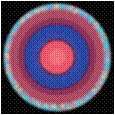

‘The virtue of Chesed reflects the sense of congruency between the self and the world. There is no single vice assigned to Chesed Vices assigned to Chesed reflect errors of the lower sefirot. There is the tyranny of Geburah, the pride of Tiphareth, the bigotry of Netzach, the hypocrisy of Hod, the procrastination of Yesod, and the gluttony of Malkuth.’
Arlen Finkle in blue grey check jacket and maroon tie, tracing a 4 sided figure with his fingers, whilst referring to letters about Larry received by the committee. The square being associated with chesed, the fourth sefirot.
5 GEBURAH or Severity



‘The person who goes with the moment, caring nothing for consequences. It is the motion itself which is all-important, not the result. There is no allowance for that which does not conform to the flow. Anything that opposes the flow is brushed aside, crushed, or entirely annihilated. This applies to anything which does not harmonize completely with the flow. The virtue of Geburah is courage or energy. Misuse leads to creulty and senseless vandalism and destruction. It is sometimes necessary to suffer certain hardships’.
Mr Park – red tie
Brandt Mitch – red hat
Fagel wearing red t shirt
6 TIPHERETH or Harmony



‘Tiphereth balances the forces of chesed and geburah. With the arrival at the state of ego-transcendence in Tiphereth, there is a timeless stillness to everything.. The virtue of Tiphereth, devotion to the Great Work, its vice is pride.’
Nachter’s colours – the bald pate, lemon tea and the warm wood glow of his office.
The Three Rabbis are on the pillar of harmony in order of age and wisdom.
7 NETZACH or Eternity



‘In Netzach, our image of ourselves is in a context in which we are not the centre of the universe but are, instead, a part of a much greater whole. That whole becomes the centre of the universe, rather than the self. We become members of a team. We identify with our family, our friends, our tribe. It is the communal reality of shared experience. The virtue of Netzach is unselfishness. Its vice is the insularity of the in-group., bigotry.’
In comparison to Larry’s and Arthur’s high numeracy, Mimi Nudell is indeed a ‘noodle’ – a simpleton, and with the crutches of religion. But Netzach is the sefira of Emotional intelligence – instinctive, spontaneous and beyond self-concern. Even though Mimi is dressed in the pale blue of the High Priestess, with Larry in green (seated in front of the bar-b-que man in olive drabs), it is she who represents Netzach.
8 HOD or Thankfulness
‘Philosophy is a battle against the bewitchment of our intelligence by means of language.’
—Ludwig Wittgenstein’
‘Hod is the sefira of the intellect, the reasoning mind. Hod takes the mental representation of reality that begins in Yesod and advances it yet one more level of abstraction. In Hod, we see a symbolic representation of that imaginative representation of the world of sensation. It is through the symbolic activity of Hod that we teach ourselves that relationships between ideas can be appreciated and examined as abstract principles, giving rise to reason and logic. we can represent our sensations and imagination in a way that does not correspond at all to our authentic feelings. We have acquired the ability to lie, to symbolize something that does not represent our true feelings or sensations at all. The virtue and vice of Hod, honesty and dishonesty.’
Arthur in buff pyjamas as Hod, on a midnight fridge raid, hitting the orange juice.
Arthur is well intended in his attempts to construct the mentaculus as a sure guide to an uncertain universe. However as Godel showed, a logically complete map would be full of conceptual holes and paradoxes (Russell Paradoxes included), for example, a complete map of the universe would have to include itself on it, this would also have to have itself on it etc. leading to an infinite regression, therefore a logical completion would be an impossibility.
Mentaculus as Tractatus – a text comprised of ‘logical symbolism and religious mysticism’.
In the Tractatus, Wittgenstein adopted a systematic approach to logical analysis which he derived from several influences, notably his work with Russell form 1911-14 and to some extent Karl Kraus’s grammatical analysis in pre WW1 Vienna. Both Russell and Kraus had a belief in a consistency an inherent truth within the textual and mathematical structures (Sussman’s attempts to decode Russell Kraus’s mystifying teeth).
The Tractatus was very much a project of its age, filled with the hopes of Logical Positivist ambitions of providing a solid theoretical foundation for western science and culture.
Wittgenstein later rejected the use of systematic methods for such analysis and well as much of the contents of the Tractatus (Arthur’s scene of complete disillusionment at the Jolly Roger- ‘It’s all shit’).
The jury is still out on whether Wittgenstein was homosexual.
‘In Yesod, we experience an imaginative representation of that world of sensation. The virtue of Yesod is independence. The vices are procrastination and idleness.‘
Our perceptions condition our experience of the world. Yesod is also the unconscious mind and a symbol for puberty.
The world of Yesod is the world of form and appearance, not substance; it is the world of illusion.
Danny as a representation of Yesod is shown as the unenlightened adolescent watching TV, as the camera pans from evil brain on TV to the kitch print of an innocent child painting on wall.
Rabbi Scott Ginzler and the space ship of the imagination. See path 28 Tarot card the star.
10 MALCHUTH or Kingdom
‘Malkuth, the assigned virtue is "discrimination" and the vice "inertia, gluttony". Discrimination is the ability to accurately detect differences between things. We detect these differences with our five senses. What is real in the sephirah of Malkuth is what can be sensed by vision, hearing, touch, taste, and smell. The sensory experiences of Malkuth may not always be accurate, but they are indeed what we feel.‘
Malkhuth, means "Kingdom," but by a close pun also means "Queen" or "Great Lady." In her averse or polluted form she was the demoness Lilith, associated with the realm of matter/earth.
Mrs Samsky wears an orange top and yellow skirt, at home, yellow dress at the Bar Mitzvah and lies on a yellow ochre sun lounger.
See also path 32 – tarot card The World.
11 The Fool
Card 0 Self determination – the path of decision
Hebrew letter Aleph
Literal meaning Ox
‘Be wholehearted with the Lord, your God: Conduct yourself with Him with simplicity and depend on Him, and do not inquire of the future; rather, accept whatever happens to you simplicity and then you will be with Him and to His portion.’
— Deuteronomy 18:13
The fool is an innocent, entering the world without preconceptions.
The image of the Sad clown (above taken from the French tarot nouveau also known as the Bourgeois tarot deck) has here been flipped horizontally. The imagery of the Rider-Waite fool was previously used in the Big Lebowski, the Dude with Walter’s dog snapping at his heels and later the Dude holds a bag of Walter’s clothes, the Dude smelling a flower at the Big Lebowski’s garden.
Ox - There is a bronze statue of an ox in Larry’s living room.
Ox as Red Heifer
The law of the Red Heifer (Numbers19:2) is one of the odder laws of the bible. King Solomon said "I applied all my wisdom, but it remained beyond me." (Ecc 7:13) The ashes of the heifer, cleansed the unclean, yet defiled the priest who performed the cleansing. A biblical law for which there is no apparent logic. ‘Please. Accept the mystery’. Like the story of Job it serves as the standard of commitment to Yahveh and His Commandments.
The Taming of the wild ox
(In modern Hebrew a derivative of the word aleph can mean ‘tamed’ when referring to wild animals.)
The ten Ox-herding Pictures, by Zen Master Kakuan, twelfth century China, are a series of short poems and accompanying pictures that are intended to illustrate the stages of a Buddhist practitioner’s progression towards enlightenment.
Interpretation by Max Gimblett:
In the first picture “Seeking the Ox” we are just setting foot on the spiritual path ahead of us and are blissfully unaware of what the ox is or how it can be found. With all the horizon around us we scan constantly for anything but the resulting task can only result in frustration while still living in a world of illusion
In the second picture “Finding the tracks” our intrepid searcher has ceased scanning the horizon and has begun to look within. While the ox still eludes us, we find tracks, scat and the occasional broken twig to alert us of his presence. I liken it to the first solemn or flippant adventure into zazen where still clueless we begin to search in the right direction.
Mr Park makes explicit the paradoxical dilemma that faces Larry
KATSU! The third picture “First Glimpse of the Ox” represents our first experiential view of the Mind. Clouds open up briefly and we see the open sky but the cloud quickly close and the ox runs back into the weeds. Upon retrospection it could have just been a daydream or a bit of indigestion
The fourth picture “Catching the Ox” represents the ability to view our past thoughts and patterns of thought as delusional. We now understand and realize the ox but the ox is still wild and unruly. Unwilling to be grasped, the ox still stamps the ground and pulls at the tether. The strength of the ox becomes more apparent
Larry fails to catch up with Clive, and looses the plot, as his attentions are drawn towards his neighbor.
“Taming the the Ox” represents the practitioner becoming more and more at ease with his own true nature. Practice is still not a thing of ease but the ox has become tolerant and tame to the tethers that we place upon it. It no longer runs free in the weeds but follows us with bowed head and red eyes.
In the 6th picture “Riding the Ox Home”, the animal is finally completely tamed. Advanced and persistent practice has removed the need of rope and tether. Both ox and man move together with ease but the delusion of a separate ox and practitioner still exists
“Ox Forgotten, Self Alone” represents the moment where ox and practitioner become one. With duality transcended and awareness present, the practitioner is free to continue practice without constant attachment to concepts and worldly things.
In “Both Ox and Self Forgotten” no picture is represented since at this point shunyata (emptiness) is realized. Both the searcher and the ox were realized as one but now even that conception is dropped. This is satori. This is liberation. Nothing worth experiencing when everything is already experienced.
In the 9th picture “Return to the source” we are back at the beginning but no ox, no practitioner and no active searching. Everything is calm, fluid and impermanent. But it doesn’t matter. It sets the stage for a new practitioner to wander out and peer into the horizon dutifully searching for the ox.
‘Aitz chaim he’
“Entering the Marketplace with Helping Hands” – A return to life. A return to the mundane. A lifetime of searching that can stretch years or moments all for the understanding that each moment can encapsulate all of the Ox Herding pictures. Each moment a search, a catch and a release. But once released we return to guide down the same path.
12 The Magician
Card number 1 Awareness
Hebrew letter Beth
Literal meaning House or Body
‘The twelfth path is called the Intelligence of Light, because it is the image of magnificence. It is said to be the source of vision in those who behold apparitions.’
— From the Sefer Yetzirah
The metaphor of ‘Light’ is used literally in Larry’s X-ray examination
A charlatan or shaman? Dr Shapiro as the Magus, cigarette as wand, (see path 32 The World) his desk with pens and ash tray mimicking the swords,and balls on the Magicians stall. The ‘inverted cup’ of the X ray machine hangs over Larry’s body as he lies on the X-ray room table.
Card number 2 Intention
Hebrew letter Gimel
Literal meaning Camel or Sling
The High Priestess has a scroll in her hands, bearing the word TORA an allusion to the Torah scroll “all the stories”. She is seated between the white and black pillars—’J’ and ‘B’ for Jachin and Boaz of the Temple of Solomon. The veil of the Temple is behind her, embroidered with pomegranates. Behind her is a body of water.
The most faithful image in the film to the Rider-Waite tarot deck, the seated Mimi Nudell is the High Priestess at the lake side. The sun lit tree and the tree in shade stand in for the two pillars, Lake Nokomis as the body of water. See also path 7.
Sling – Amongst the confiscated school boy clutter in Turchik’s draw is the sling. For Turchik’s drawer, see path 21 -The wheel of fortune.
14 The Empress
Card number 3 Belief
Hebrew letter Daleth
Literal meaning Door
The Empress is an ancient archetype, a symbol of fertility and prosperity, she nurtures and nourishes with courage, representing unconditional love – making no demands and setting no conditions.
Corn goddess and corn maiden
Judith’s dress is a near match for the Empress, but it is her daughter, Sarah, a Jewish American Princess, who really wears the Empresses clothes. The reversed image of Judith shows her profile against the brown door matching profile of the empress on the brown chair, Sarah’s arms mimic the Empresses. The Empresses heart shaped shield echoed by the foreshortened round table and plates.
Door – the first shot of Sy, where he is framed by the front door and is seen peering through, an authoritative TV talking head, trying to look outside of the set.
15 The Emperor
Card number 4 Reason – The Emperor sits and thinks.
Hebrew letter Tzadi
Literal meaning Fish hook
The fifteenth path is called the Constituting Intelligence, because it constitutes creation in the darkness of the world.
It is itself that darkness mentioned by Scripture (Job xxxviii. 9),
the cloud and the envelope thereof that it is the thick-darkness, and this is,
“and thick-darkness is its swaddling band.”
–From the Sefer Yetzirah
The Emperor is a man in the prime of life – successful, confident, secure and well-established. The Emperor is quick and energetic, exerting control over his life. A sensitive leader. he listens to others but always the final decision is his own. This is a man who has proved himself worthy. He is prepared to protect and defend the vulnerable, as well as to shed the lazy and weak.
The colors of the Emperor card are echoed in the colors of Milgram’s office.
The bird is a common symbol on the Emperor card on many Tarot decks. The 2 owls by Milgram ‘s table lamp represent the owls of darkness.
"the owl was a familiar bestiary figure, whose shunning of light and preference for darkness were compared to the Jews who cling to the darkness of their ignorance and shun the bright light of Christ." From ‘Saracens, demons and Jews: making monsters in medieval art’ by Debra Higgs Strickland 2003 Princeton University Press.
The theme of darkness is also applied in Nachter’s tale of the Goy’s teeth. Nachter is literally – someone who is in the dark.
Fish hook - Milgrams fishing rods are leaning against his bookcase.
Tzadi - The colloquial Hebrew for Tzadi is tzadik, which also has the meaning of a hidden righteous person, Nachtner calls Sy a tzadik .
16 The Hierophant
Card number 5 Intuition
Hebrew letter Waw
Literal meaning Nail
‘Dualism is the conceptual division of the world into categories … human perception is by nature a dualistic phenomenon”
— Douglas Hofstadter, Godel Escher Bach.
The Hierophant (also known as Pope) is concerned with matters of faith, religion, belief and morality. He has a healthy connection with life and living – someone who has experienced life in full and now feels that they have the experience and wisdom needed in order to teach others. The Hierophant card is often shown with 2 fingers pointing to heaven 2 fingers pointing to earth indicating a duality, heaven and earth, good and evil, saint and sinner.
Sy Ableman – Saint or Satan
Like a character from a Schrodinger’s cat novel (a novel which may have two mutually exclusive interpretations), Sy is portrayed as both a saint and a satan, The echolaliaed incredulity in Judith’s choice of new partner have dual interpretations; Sy being either too loathsome or too upright a character to be involved with her. The effect is similar to the face/vase figure and ground puzzle, the image is not clear until the brain decides which to focus on and makes an interpretation of what is seen.
After his death Sy appears in Larry’s dream as a devil, planting seeds of doubt in Larry’s mind and having the temerity to interpret it for him in no uncertain terms – from within the dream itself!
Nail – Sy in Larry’s sex and death dream ‘nailing it down – so important’.
Waw –The letter Waw is colloquially called vovnik–at Sy’s funeral Nachtner likens Sy to one of the ‘Lamed vovniks’, one of the 36 righteous people born in every generation, or a ‘Tzadik’ a spiritual master.
The Big Lebowski as Hierophant
The Coens have used the imagery of the Hierophant previously in their film the ‘Big Lebowski’. Brandt shows the Dude the Big Lebowski’s key to the city which is reminiscent of the Key held by the Pope card. Some Tarot cards have the pope/hierophant surrounded by kneeling children The Big Lebowski has a photograph of himself with his ‘achievers’.
17 The Lovers
Card number 6 Discrimination
Hebrew letter Zain
Literal meaning Sword
The Lovers are the embodiment of the harmony of opposites.
Sy and Judith at Embers are the lovers, similarly attired with their arms flapping open (see also path 26 The Devil, The Devil and Lovers cards are connected). Sarah appears just prior to the Embers scene, resembling the angel, draped in black, hovering above the lovers.
Sword – Judith with knife chopping up a carrot (see also path 3 Binah).
The image of the wife chopping vegetables with a kitchen knife was used by the Coens in Fargo in the introductory shots of Jerry Lundegaard’s wife, indicating marital strife.
18 The Chariot
Card number 7 The veil of discouragement
Hebrew letter Cheth
Literal meaning Fence
The Chariot depicts a warrior driving a chariot triumphantly home, representing the forging of ones will upon the world.
The card is about the struggles that are had with ourselves and with life and harmonizing opposing forces.
Fence – Brandt’s territorial claims, a battle of wills.
Bambi – The deer on the Brandt’s car.
Felix Salten wrote Bambi in 1923, some saw it as an anti hunting book, others saw allegory, the Nazis banned the book as a political allegory on the treatment of Jews in Europe. Salten was a ally of Karl Kraus (see also path 29 The Moon).
An image which depicts the characters of the Chariot card in inverted form is used in Big Lebowski when we see Maude Lebowski as the charioteer, with a Cleopatra hair style like that of the sphinxes and flanked her two guards, one black one white.
19 Strength
Card number 8 The veil of weakness
Hebrew letter Teth
Literal meaning Snake
The card shows Strength opening the jaws of a lion and peering in.
The similarity of Mr Park’s culture clash hand gesture to the opening of the lions jaws by the strength car.
The tarot nouvelle representation of the card is the Music room.
Note that in the background Brandt is holding the open shears, referencing the giant scissors motif in The Big Lebowski.
Snake – hosepipe as snake. The Polish and Russian words for garden hose are both literally translated as snake.
20 The Hermit
Card number 9 The veil of darkness
Hebrew letter Yod
Literal meaning Hand
The Hermit carries Lamp of Knowledge, symbolic of all the knowledge and wisdom he has acquired, he is a ‘Threshold Guardian’ and traditionally a hunchback.
Arlen Finkle is portrayed with an awkward gait, perhaps that of a hunchback, his habitual stance is leaning on the door frame of Larry’s office, literally a guardian of the threshold. Arlen Finkle – perhaps a reference to ‘Judy Finkle’ – A name ‘self applied’ by hunchback man in the film ‘Big man on campus’ (1989).
The colours and motifs of the Cantor Yossele Rosenblatt LP cover mimic the Hermit card.
Hand – the yad pointer used by Danny at his barmitzvah during his Torah portion recital.
21 The Wheel of fortune
Card number 10 The veil of greed
Hebrew letter Kaph
Literal meaning Palm of the hand
“The twenty-first path is called the Rewarding Intelligence (or the Conciliating Intelligence
or the Intelligence of Desire or Intellect of the Object-Sought) of those who seek….”
From the Sefer Yetzirah
The faux continuity fluff with Turchik’s drawer – a sleight of hand, with the gyroscope being replaced by a Playboy magazine.
The action of the film is set during late spring of 1967 in the build up to the six day Arab Israel war, ‘With the entire Arab world mobilizing to deliver the death blow to the fledgling state of Israel’ Winston Churchill (jnr) ( Ginzlers calendar is open on May June 1967). The film plays with the idea of Microcosm and macrocosm. Like Israel in June ’67, Danny pre-empts disaster (a pounding by Fagel) by taking his fate in his own hands breaking into Turchik’s Drawer. There we find no radio but a typical mix of school boy stuff; a slingshot, a toy ray gun; (the ray gun may make menacing noises but which would you choose in a play ground showdown perhaps a reference to the 6 day war and David vs Goliath), and a copy of April 1967 playboy with interview with the British Historian Arnold Toynbee. For Toynbee, a civilization might or might not continue to thrive, depending on the challenges it faced and its responses to them. This view contradicted previous ideas about natural cycles of the rise and fall of empires. The message being Don’t leave it to Fate, This contrasts with Arlen’s advice to Larry that ‘doing nothing is fine’.
Dick Dutton is perhaps a reference to the Saudis’ agent Fred Dutton, a former Assistant Secretary for Legislative Affairs (AKA Dutton of Arabia ) who promoted Arab foreign policy interests in the 1980’s
Palm of the hand - the surreptitious link to the Playboy mag.
22 Justice
Card number 11 Balance and harmony
Hebrew letter Lamed
Literal meaning Ox-goad /Staff
Justice, seated between pillars, holds the scales that represent the balance between good and evil, right and wrong and the sword, which knights us or which claims retribution.
Nachtner as Justice standing between two pillars, finger in the air and with a crown.
In the Crowley deck card number 11 is Lust. The imagery of Lust is used when Larry is on the roof adjusting the TV aerial. (an ox-goad is a 10 foot pole with a funny metal thing on the end).
Lamed - Nachtner’s Lamed vovnik speech at Sy’s funeral (see also path 15 the Emperor).
23 The Hanged Man
Card number 12 The veil of obstinacy
Hebrew letter Mem
Literal meaning Water
The Hanged Man is caught between heaven and earth, a life in suspension. The card deals with sacrifice, delays and waiting, being bogged down and a sense of helplessness. A change of thinking is required. The hanged man endures.
Arthur is portrayed as the Hanged man. At the lake side, with back lit head halo effect and arms outstretched he is seen posing for a crucifixion. Later, when brought to Larry’s house by the Police in handcuffs, in a posture that resembles the hanged man. The image of Jesus as the hanged man was also used in The Big Lebowski, referencing the Crowley tarot deck and perhaps hinting at the Gnostic interpretations of Jesus.
Arthur and Water
The Hanna-Barbera toned Arthur spends a lot of time around water – in the bathroom , shot dead in the water during Canadian border crossing dream and at the sunlit scene at lake Nokomiis, which contrasts the scene at the Jolly Roger where he is seen looking down into at the brown edged dry concrete of the drained pool.
After Arthur complains about God giving him a duff hand Larry says to Arthur ‘you’ve got to help yourself’. This echoes the Russell paradox – ‘god helps those who help themselves – the devil helps all those who don’t help themselves, who then helps the devil?‘, Abraxas seems to be the implied answer, a God linked with gnosticism that is higher than the Christian God and Devil, combining all opposites into one Being– a way of jumping out of loop and seeing the paradox at another level.
Larry’s and Arthur’s delusions are caused by reification, perceiving the world through the faculty of language and cultural beliefs, mistaking a model of the world for what is really going on.
Below from DEREIFICATION IN ZEN BUDDHISM by ROBERT J. MOORE
“reification is the apprehension of the products of human activity as if they were something else than human products—such as facts of nature, results of cosmic laws, or manifestations of divine will.” Members of society may reify or attribute an in- dependent ontology to language, ideas, roles, norms, institutions, and even self-identities. By denying the status of these objects as human products, reification helps stabilize the inherently precarious social world.
Reification is different from objectification, the process by which the mind lifts one aspect of reality out of the overall flow of experience and makes it a discrete object of consciousness (Berger and Pullberg 1965, p. 200). Reification, on the other hand, is the process of objectifying reality and then, apprehending the object as an alien thing that is independent of its producer. Furthermore, Berger and Pullberg (1965, p. 200) conceptualize reification in terms of “alienation”:
By alienation we mean the process by which the unity of the producing and the product is broken. The product now appears to the producer as an alien facticity and power standing in itself and over against him, no longer recognizable as product. In other words, alienation is the process by which man forgets that the world he lives in has been produced by himself. Reification is objectification in an alienated mode.
Thus, reification is the objectification of reality by an alienated consciousness.
24 Death
Card number 13 Transformation
Hebrew letter Nun
Literal meaning Fish
The card signifies endings and the need for a change of behavior.
Beneath the horse lies a fallen king, Death eventually claims all, whatever their status. The sunrise between the two towers is the grey light of daw, an in between state.
The image of the skull and cross bones of the Jolly Roger Motel pictured at dawn, with Arthur as the fallen king.
Larry’s two dark nights of the soul and the two times of exile of the children of Israel are accompanied by Dem Milner’s Trern (“The Miller’s Tears”)
Fish – The mounted fish in Milgram’s office. A Christian symbol, or done purely for comic effect? The Coen brothers take on the practices of divorce lawyers in their film ‘Intolerable cruelty’ may shed some light on this.
25 Temperance
Card number 14 Verification
Hebrew letter Samech
Literal meaning Prop/Pillow/Rest
‘The twenty-fifth path is called the Intelligence of Temptation or Trial, because it is the first temptation by which God tests the devout.’
— From the Sefer Yetzirah
Temperance shows the figure of a woman pouring water from one vessel into another. This card is symbolizes the harmonization of opposites. The figure has one foot in the water, one on land, symbolic of being present in both worlds simultaneously. The colours of Temperance are Red and White. The card represents new freedoms.
As in Larry’s dreams, Temperance in the form of Mrs Samsky, sits astride the central column, coming between death and the devil.
Mrs Samsky lives at 8411, 8 + 4 + 1 + 1 = 14 the card number for temperance (the Gopniks live at 8419, 8 + 4 + 1 + 9 = 22 the 22 Tarot cards).
The exterior of her house is white with red shutters, red car parked outside. Iced teas are served in red and white glasses. Mrs Samsky like an Eve passing the joint, tempts Larry with sex and drugs and rock and roll, while the track "Today" from the Surrealistic Pillow album plays in the background.
Sy as Temperance?
Within Tarot lore, Temperance is linked to the Hierophant card numerically –
The number of the Temperance card being 14 which is 1 + 4 making 5, the number of the Hierophant.
One tradition has the Temperance card pouring wine into a jug of water. Sy offers Larry a bottle of Bordeaux and makes a deal out of how it should be poured.
Temperance is a synthesis of opposites, Sy as Saint and Sy as Satan (see path 16 The Hierophant).
Danny’s first temptation
Our first encounter with Danny shows him dozing off in class, listening to Surrealistic Pillow – one ear in each world.
‘Prior to a Bar Mitzvah, the child’s parents hold the responsibility for the child’s adherence to Jewish law and tradition. After which the children bear their own responsibility. The advice Danny gets from Marshak (“ to be a good boy’’) when his confiscated radio is returned is ignored. By Monday morning we find Danny tuned in again. Are we seeing a failure of intergeneration transmission of culture or is the failure in the culture being transmitted?
26 The Devil
Card number 15 Self deception, the veil of lies
Hebrew letter Ayin
Literal meaning Eye
The Devil is the personification of the animal and the instinctual. Male and female forms are shown chained or trapped at his feet.
According to the Tarot the Devil and the Lovers cards are linked numerically the card number of the Lovers- 6 is the sum of 1 + 5 , 15 being the card number of the Devil. Sy and Judith in similar clothes and poses side by side at Embers (see path 17 The Lovers).
As with the Lovers, the image of the Devil card is created by the cut from Sy and Judith at Embers to the evil Sci Fi brain. The is ‘brain’ flanked by armed two guards, their weapons resembling the devils wings, on top of the television set is the TV aerial which along with the pennants make up the inverted pentangle.
Eye –The first 12 sequences of the film alternate between Danny and Larry, as do the final 12. The palindromic symmetry in the placing of two close up shots of Larry’s eyes plays like a crab canon, the doctor checking Larry’s eyes mirroring the scene with Larry starring at the grades prior to changing the F to a C-.
27 The Tower/ House of God
Card number 16 The veil of deep sleep, awakening
Hebrew letter Pe
Literal meaning Mouth /to Speak
The Tower, sometimes known as the House of God, represents the fall into the material and animal state, a chastisement of pride and the intellect overwhelmed in the attempts to penetrate the mysteries of being. The two falling figures are the literal word made void and its false interpretation.
Mouth - At his Bar Mitzvah Danny is momentarily struck dumb, unable to speak, unable to recite the Torah portion
28 The Star
Card number 17 The veil of hopelessness, hope
Hebrew letter He
Literal meaning Window
The Experience of Yesod is named "The Vision of the Machinery of the Universe"
(See path 8 Rabbi Ginzler as Yesod)
Window – When Rabbi Ginzler invites Larry to ‘look out of the window’’ to gaze at the wonder of the world, he captures the moment of unintentional humor in the final scene of epic TV series ‘Cosmos’ where a self congratulatory Carl Sagan sits enraptured in his ‘spaceship of the imagination’ (Sadly, this scene has been cut from the DVD set of the series).
29 The Moon
‘Nothing is so difficult as not deceiving oneself.’
—Ludwig Wittgenstein
Card number 18 The veil of delusion
Hebrew letter Qoph
Literal meaning Back of the head.
The card symbolizes the realm of dreams and fantasy. It is the path of blood and tears. The Moon illuminates our animal nature. Dogs or wolves are depicted at the waters edge, baying at the moon. Falling like tears from the sky are droplets shaped like the Hebraic Yod symbol.
Brandt and son are the ominous creatures, hunting Jews. Larry is right to fear death by water.
Back of the head – In Larry’s final dream, Arthur is shot in the back of his head.
Arthurs cyst.
30 The Sun
Card number 19 Self realization
Hebrew letter Resh
Literal meaning Head
The Sun conveys a sense of fertility and bounty. It is concerned with the cyclical turning of the years and may indicate reversal of fortunes and problems in the family.
The Sun – Larry’s panoramic view from his roof.
Link to path 22 Justice/Lust – ox goad as tv aerial
Head – Larry’s fall from his roof, ‘should have worn a hat’.
31 Judgement
Card number 20
Hebrew letter Shin
Literal meaning Tooth
"God enlighten me. God enlighten me. God enlighten my soul."
Ludwig Wittgenstein Journal entry from March 1916 during The Brusilov Offensive
The Judgment card shows figures arising from their graves in answer to the call of the angel blowing the last trumpet. Judgment forces an acknowledgement that our actions set up a chain of cause-and-effect for which we are solely responsible.
The flag pole shot near the end of the film resembles the image on the Judgment card; children on the outlined tarmac, arms flailing, flag and pole as trumpet, with the tornado, about to ‘rip the fucker right off’.
Shin – The letter Shin inscribed on the mezuzah situated upon the Samsky’s doorframe is shown ominously as Larry is about to knock on his neighbor’s door.
Tooth – Nachtner to Larry ‘These questions…maybe they’re like a toothache. Feel them for a while, then they go away.’
Wittgenstein was also fond using of the example of a toothache, but one of the ways he used it was to show that one can witness another’s suffering but one cannot have direct experience of it. Nachtner tells Larry his tale of the Goys teeth, but does not have wisdom to grapple with Larry’s sufferings.
The Goy’s Teeth
The owlish Sussman myopically searching through the night, trying to extract meaning from the inscribed message "help me, save me" found in Krauss’s mouth.
Can Sussman suss it out? – No, Sussman cannot suss it out.
Sussman attempts to discover the meaning of the Goy’s teeth is through numerological analysis, believing that within the text there is a greater truth to be revealed. This method got him nowhere (Red Owl excepted). He was barking up the wrong tree.
Eventually Sussman returned to life.
‘The solution of the problem of life is seen in the vanishing of the problem.’
— Ludwig Wittgenstein Tractatus 6.521
By naming the Goy Russell Kraus(s), the Coen Brothers are perhaps hinting at the inappropriateness of using systematic methods of Bertrand Russell and Karl Kraus to discover the truth with a text or formal system and that all such methods are doomed to failure. A reliance on formal methods or purely on natural language when understanding of the world results in unresolveable paradoxes.
Both Kraus and Russell were very influential on the young Wittgenstein and his initial working on the Tractatus (See also path 8 Hod).
Bertrand Russell spent a lot of time proving that 1+1=2 in his ‘Principia Mathematica’, written to provide what he thought were solid logical foundations for mathematics and science, an equivalent to Isaac Newton’s ‘Principia’. Godel’s Incompleteness Theorem reduced the entire vast structure to rubble. The incompleteness theorem, showed that it was not possible to prove the consistency of a formal system within the system itself.
Kraus was very concerned about the truth and ethics in language. He was convinced that every little error, albeit of an importance that was seemingly limited in time and space, shows the great evils of the world and era. Thus, he could see in a missing comma a symptom of that state of the world that would allow a world war. One of the main points of his writings was to show the great evils inherent in such seemingly small errors. The change of F to C- almost a typo – but a moral choice.
32 The World
Card number 21
Hebrew letter Tav
Literal meaning Cross /Tau cross (a T shaped cross)
A World card depicts a female figure, wand in hand, dancing within or upon the world, surrounded by a laurel wreath.
The 32nd path connects the real world to the underworld of the imagination and the unconscious.
From Larry’s roof top vantage point, the camera pans across from his world view to the sun bathing Mrs Samsky, naked, with cigarette in hand.
Tau cross - Larry, up on the roof, adjusting the ‘T’ shaped TV aerial.
33 The Hidden Sephira
‘The Thirty-third Path is the Sublime Intelligence, and it is so called because it assimilates within itself the essence of all 32 paths.’
— From the Sefer Yetzirah.
Daath – knowledge brought by experience, (the greek translation being gnosis).
‘Daath is symbolically a bridge between the divine and the not divine. The virtue of Daath is detachment or justice. There is no Mercy in this justice nor is there any Severity. Good and evil are meaningless, as is punishment and reward. The vices are apathy, inertia, cowardice, and pride. These vices involve clinging to what one has, an unwillingness to let go of what we think is important or to relinquish the familiar for the unfamiliar’.
Marshak’s Office
For a larger version of Marshak’s office click here.
Marshak’s office contains symbolic references to the sefirot of the tree of life..
Keter Tthe crown.
Chochmah A rod, straight line.
Binah Lamp.
Daath Marshak’s knowledge brought by experience.
Chesed/Geburah Represented by the Caravaggio’s "The sacrifice of Isaac".
Abraham is associated with the sefirah of chesed.
Isaac is associated with geburah.
Tiphereth The ‘crown prince’, (Danny as the the Rosh Tipheret or Rastafari)
Malkuth The crowned queen. Marshak’s receptionist with the ERII hair cut
A major part of Zen is a fight against the reliance on words, “truth” being found in living experience rather than in linguistic and conceptual representations of reality. Language is seen as being at the core of dualism.
Koans are used to help attain a dereified perspective. Koans are not rational questions with rational answers, ones understanding of the Koan is demonstrated rather than explained.
One does not laugh at a deconstructed joke.
The experience of Daath is said to involve a suspension of reason, a state of mind that resembles madness. Hence Marshak’s near-senile manner when posing his question to Danny.
Marshak recites "When the truth is found to be lies, and all the hope within you dies," yet the lyric in "Somebody to Love" is "…all the joy within you dies". Perhaps the misquote was influenced by Corinthians -
‘And now these three remain, faith, hope and love, but the greatest of these is love’
—1 Corinthians 13:13
APPENDIX
|
Sefira |
Assiah |
Yetzirah |
Briah |
Atziluth |
|
|
1 |
Keter |
White, flecked gold |
White |
White |
Brilliance |
|
2 |
Chochmah |
White, flecked red, blue, yellow |
Blue pearl grey |
Grey |
Pure soft blue |
|
3 |
Binah |
Grey, flecked pink |
Dark brown |
Black |
Crimson |
|
4 |
Chesed |
Deep azure, flecked yellow |
Deep purple |
Blue |
Deep violet |
|
5 |
Geburah |
Red, flecked black |
Bright scarlet |
Scarlet |
Orange |
|
6 |
Tiphertht |
Gold amber |
Rich salmon |
Gold |
Clear pink rose |
|
7 |
Netzach |
Olive, flecked gold |
Bright yellow-green |
Emerald |
Amber |
|
8 |
Hod |
Yellowish brown, flecked white |
Red-russet |
Orange |
Violet purple |
|
9 |
Yesod |
Citrine, flecked azure |
Very dark purple |
Violet |
Indigo |
|
10 |
Malchuth |
Black rayed with yellow |
As briah, flecked with gold |
Citrine, olive, russet, black |
Yellow |
|
Hebrew Letter name |
Hebrew Alphabet |
Path Number |
Major Arcana of the Tarot |
Literal Meaning |
|
Aleph |
? |
11 |
0 The Fool |
Ox |
|
Beth |
?? |
12 |
1 The Magician |
House, Body |
|
Gimel |
? |
13 |
2 The High Priestess |
Camel. Sling |
|
Daleth |
? |
14 |
3 The Empress |
Door, |
|
He |
? |
28 |
4 The Star |
Window, To Behold |
|
Vav |
? |
16 |
5 The Hierophant |
Nail |
|
Zayin |
? |
17 |
6 The Lovers |
Sword |
|
Heth |
? |
18 |
7 The Chariot |
Fence |
|
Teth |
? |
19 |
8 Strength |
Snake, Serpent |
|
Yod |
? |
20 |
9 The Hermit |
Hand |
|
Kaph |
?? |
21 |
10 The Wheel of Fortune |
Palm of hand |
|
Lamed |
? |
22 |
11 Justice |
Ox-Goad, Staff |
|
Mem |
? |
23 |
12 The Hanged Man |
Water |
|
Nun |
? |
24 |
13 Death |
Fish |
|
Samekh |
? |
25 |
14 Temperance |
Prop, Pillow, Rest |
|
Ayin |
? |
26 |
15 The Devil |
Eye |
|
Pe |
?? |
27 |
16 The Tower |
Mouth |
|
Tsadi |
? |
15 |
17 The Emperor |
Fishing hook |
|
Qoph |
? |
29 |
18 The Moon |
Back of the head |
|
Resh |
? |
30 |
19 The Sun |
Head |
|
Shin |
? |
31 |
20 Judgement |
Tooth |
|
Tav |
?? |
32 |
21 The World |
Cross |
Editorial-We’s Note: Hebrew characters aren’t printing for some reason. Sorry!






















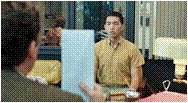





























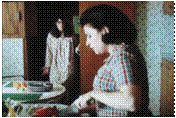

















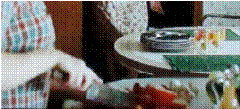




















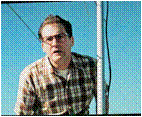































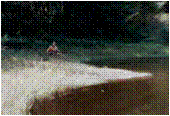



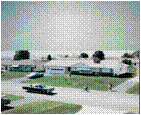










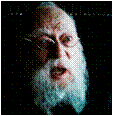




Jesus…
You said it man, NOONE fucks with the jesus
Heavy, man, Heavy. Some interesting facts. I wonder how I can keep them all in mind when I watch the movie?
Holy fuck!?? This body of work deserves two friggin Phd,s and a six pack to go! Give the man his honour,this is fuckin truly impressive!
Rev,Rob
thanks for the praise Rob, I could miss out on the Phd’s but the six pack would go down nicely. Its a draft essay that started off as a spread sheet, it still needs to be worked into a linear thread. I’ve been working on something similar for The Big Lebowski, not yet finished- health problems.
Cant wait to see it fellow reverend dude!Get well man you dont need the tsurus!:-)
Rev,Rob
I love this movie, and have wrestled with its meaning myself. Thanks for sharing you work here in this article.
If you’re interested, here’s an article I wrote a little while back detailing some of my own interpretations.
http://iahuasca.blogspot.com/2012/03/sirius-man-eats-whole-wheat-bread.html
too heavy for moi,stickin with the Tao
The film The Life of Pi does something similar with the 32 paths.